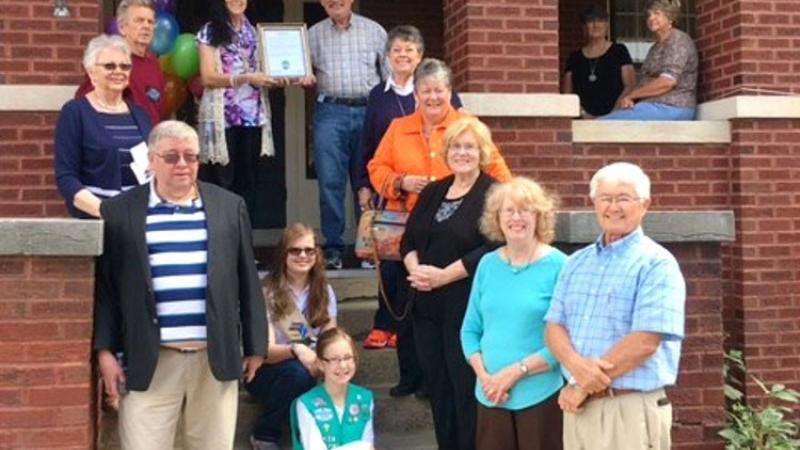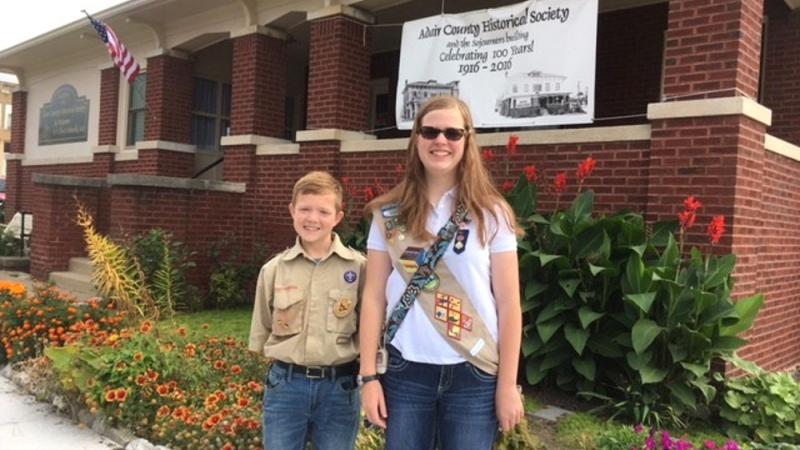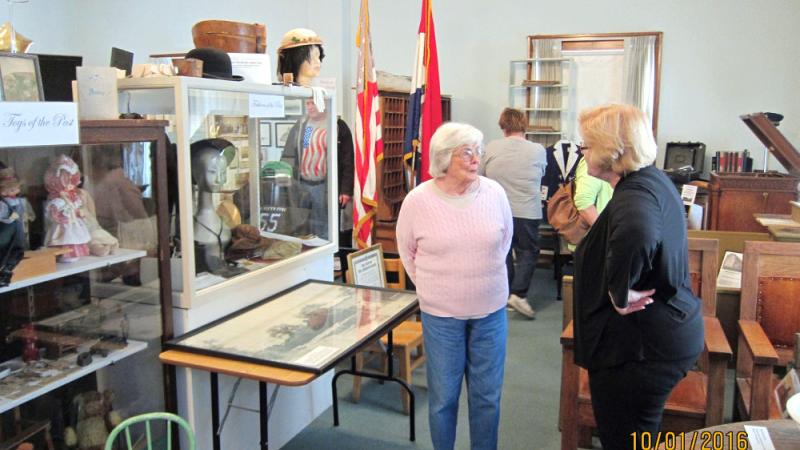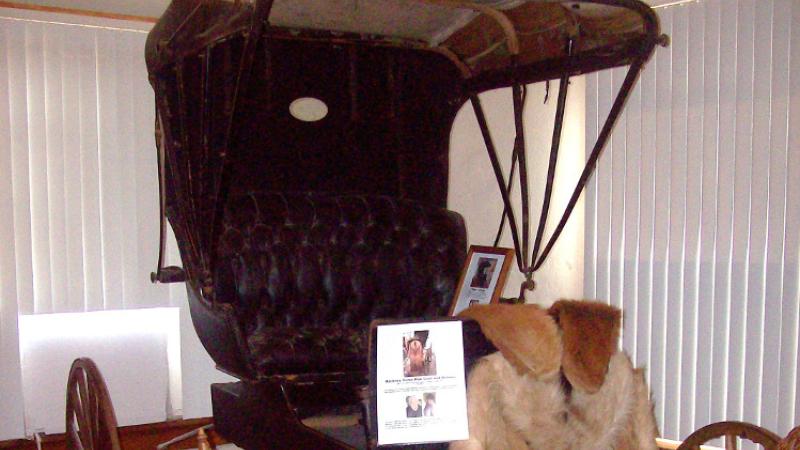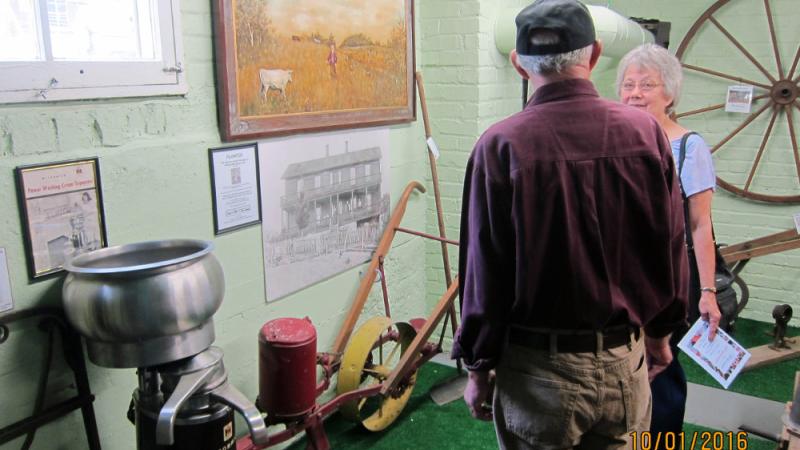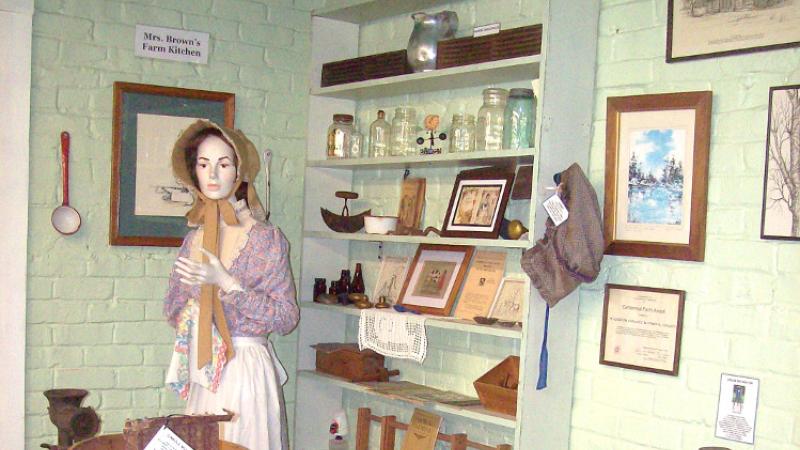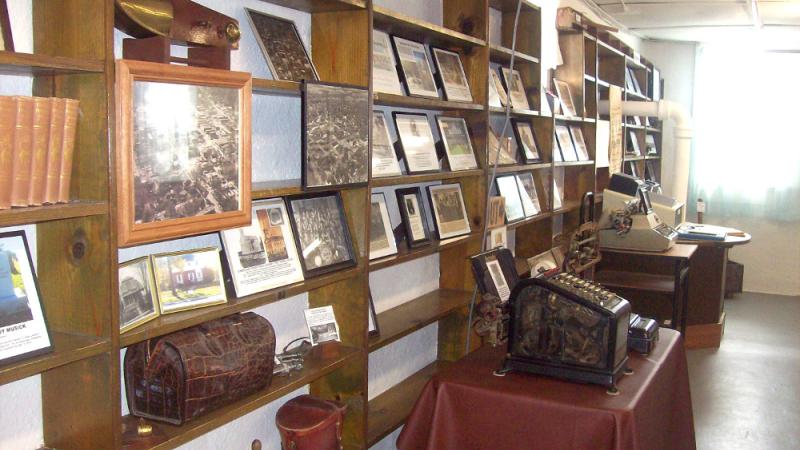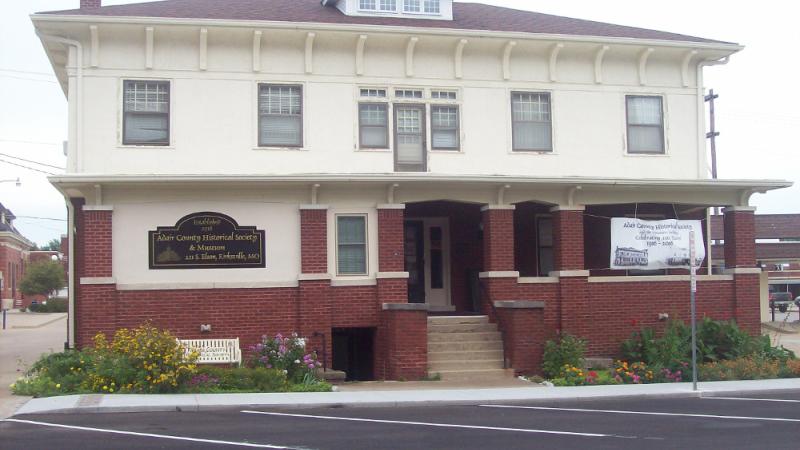50 States of Preservation: Adair County Historical Society in Kirksville, Missouri
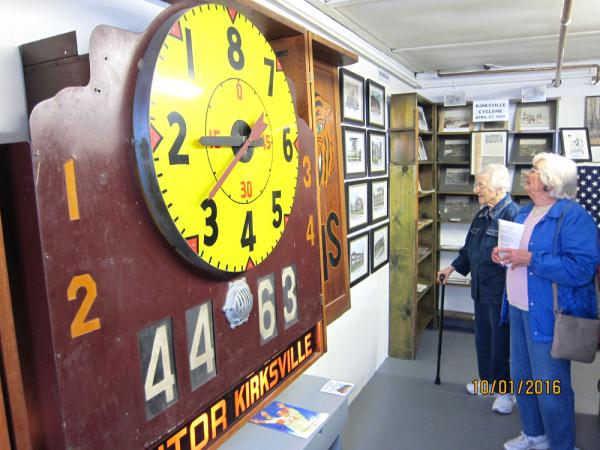
Visitors viewing the vintage scoreboard used for Kirksville High School games, now in the lower level of the Adair County Historical Society.
Image courtesy the Adair County Historical Society.

Visitors viewing the vintage scoreboard used for Kirksville High School games, now in the lower level of the Adair County Historical Society.
Image courtesy the Adair County Historical Society.
This feature is part of a series we call “50 States of Preservation,” in which we are touring small and mid-sized museums, libraries, historical societies, and other repositories across the country to show how they are helping to preserve the nation’s cultural heritage. Read other entries in the series here.
Formerly a mining and manufacturing community, Kirksville (population: 17,505) is today a thriving educational and medical center in northeastern Missouri. Kirksville is home to Truman State University, descended from the first normal school west of the Mississippi; and A.T. Still University, established in 1892, the founding institution for osteopathic medicine in the world. Established in 1916, the Adair County Historical Society (ACHS) serves as the main repository of documents and historic objects related to Kirksville and the surrounding region.
The ACHS operates a museum with a number of permanent displays including a diorama of the Battle of Kirksville in 1862, uniforms and firearms of the Civil War and World War II eras, rural schools, and a replica of the first church in Adair County. A vintage 1915 one-seat horse-drawn buggy is a reminder of the region’s agricultural roots. A public reading room contains various materials of interest to researchers: photographs, county histories, school and university yearbooks, family histories, and city directories, along with probate records, maps and surveyors’ plots, microfilm archives of census and newspaper records, and film clips of early 20th-century landmarks and activities. The museum is open three days a week and staffed by a group of highly committed volunteers, assisted by student interns from the nearby universities. The ACHS also publishes a popular quarterly history magazine and an attractive full-color historical calendar.
In preparation for its centenary in 2016, the ACHS drew on considerable community support to embark on a number of much-needed improvements. To assist with its planning efforts, the historical society applied for and received an NEH grant in 2014 to secure the services of preservation expert Jessica Bitely of the Northeast Document Conservation Center, who provided a list of recommendations for treatment priorities and developed a plan to improve storage and display of the collections.
According to Blytha Ellis, who took over as the ACHS’s President in 2015, the museum has followed up on a number of these recommendations. For example, three new display rooms were opened in the basement, which was formerly used for general storage and which had suffered from water damage. The entire area, Ms. Ellis said, was cleaned and painted, and its collections, which had included a considerable amount of “cast-off debris,” were completely reorganized. Today, artifacts are properly stored and grouped according to topic (e.g., agricultural history, business development, and general county history). Similar improvements in the preservation and display of collections were carried out in other parts of the museum.
Finally, Ms. Ellis pointed to changes made to the exterior of the 100-year-old structure. Based in part on the suggestions of the NEH-funded needs assessment, “We have revamped the drainage system and have directed the water away from the building.” On October 1, 2016, the ACHS marked the official opening of the new museum galleries as part of its 100-year anniversary celebration. In recognition of its many accomplishments in preserving the cultural legacy of the region, the ACHS received the 2017 Tourism Award of the Year from the local Chamber of Commerce.
In every state, NEH supports organizations that preserve humanities collections. Preservation Assistance Grants for Smaller Institutions (PAGs) fund projects that help safeguard photographs, letters, documents, prints, moving images, sound recordings, maps, drawings, artworks, textiles, furniture, and artifacts, making them available for future generations. These collections help researchers, educators, and members of the public better understand the complex stories of the various cities, towns, and tribal groups that make up our nation. Since 2000, NEH has made nearly 2,000 Preservation Assistance Grants to small and mid-sized organizations to preserve and care for their humanities collections. In all 50 states, the District of Columbia, and Puerto Rico and the Virgin Islands, PAG awards have funded preservation assessments, purchase of shelving, environmental monitoring equipment, and preservation supplies, and training for staff. Organizations in all states and U.S. territories are eligible to apply, and the program encourages applications from those new to NEH. The next application deadline Preservation Assistance Grants for Smaller Institutions is May 2, 2017. If you have any questions about this grant program, please contact us at @email or 202-606-8570.
